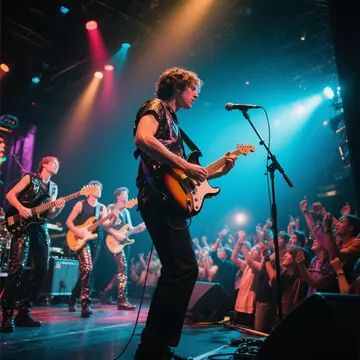AI-generated music is revolutionizing the industry, but many users notice a common issue—repetitiveness. If your AI music sounds too looped or predictable, you're not alone. This article explores why this happens and how to create more dynamic, human-like compositions using AI music tools.

Why AI-Generated Music Often Sounds Repetitive
1. Limited Training Data
Most AI music generators are trained on existing songs, which means they learn patterns from structured compositions. If the dataset lacks variety, the AI may produce similar-sounding melodies or chord progressions.
Fix: Use platforms with diverse genre datasets (e.g., AIVA, Soundraw) or fine-tune models with your own unique samples.
2. Over-Reliance on Loops
Many AI music tools rely on pre-recorded loops and MIDI patterns to speed up generation. While efficient, this can lead to mechanical, repetitive tracks.
Fix: Adjust arrangement settings, introduce variations, or manually edit sections for more organic flow.
3. Lack of Human-Like Variation
Human composers add subtle imperfections—velocity changes, tempo fluctuations, and expressive phrasing. Most AI music software follows rigid structures unless explicitly programmed for randomness.
Fix: Use AI tools with "humanize" features (like LANDR) or post-edit in a DAW (Digital Audio Workstation).
4. Algorithmic Constraints
Some AI music models prioritize harmonic correctness over creativity, leading to safe but uninspired compositions.
Fix: Experiment with different AI models (e.g., OpenAI’s Jukebox for experimental styles) or blend multiple AI outputs.
How to Make AI Music Less Repetitive
1. Layer Multiple AI-Generated Tracks
Combine melodies from different AI music generators (e.g., Boomy + Mubert).
Use AI for backing tracks and add live instruments or vocals.
2. Adjust AI Parameters for More Variation
Increase "randomness" or "creativity" sliders in tools like Soundraw.
Modify tempo, key changes, or dynamics mid-track.
3. Post-Edit in a DAW
Import AI stems into FL Studio, Ableton, or Logic Pro.
Add fills, transitions, and effects to break monotony.
4. Use Hybrid Workflows (AI + Human Input)
Let AI draft a basic structure, then refine it manually.
Train custom AI models on your own music for a unique style.
Best AI Music Tools to Avoid Repetition
| Tool | Key Feature | Best For |
|---|---|---|
| AIVA | Dynamic orchestral variations | Film/game scoring |
| Soundraw | Customizable melody generation | Content creators |
| Boomy | Genre-blending AI algorithms | Quick song ideas |
| LANDR | AI mastering with human-like touches | Professional polishing |
The Future: Smarter, Less Repetitive AI Music
New advancements in generative AI (like Google’s MusicLM) promise more adaptive compositions. Expect:
Real-time AI improvisation for live performances.
Emotion-aware algorithms that adjust mood dynamically.
User-guided AI where feedback refines outputs iteratively.
Final Thoughts
Repetition in AI-generated music is a solvable challenge. By understanding the limitations and applying smart tweaks—layering, manual editing, and hybrid workflows—you can produce rich, evolving tracks that rival human-made music.
Which AI music tools give you the most variety? Share your tips below!
